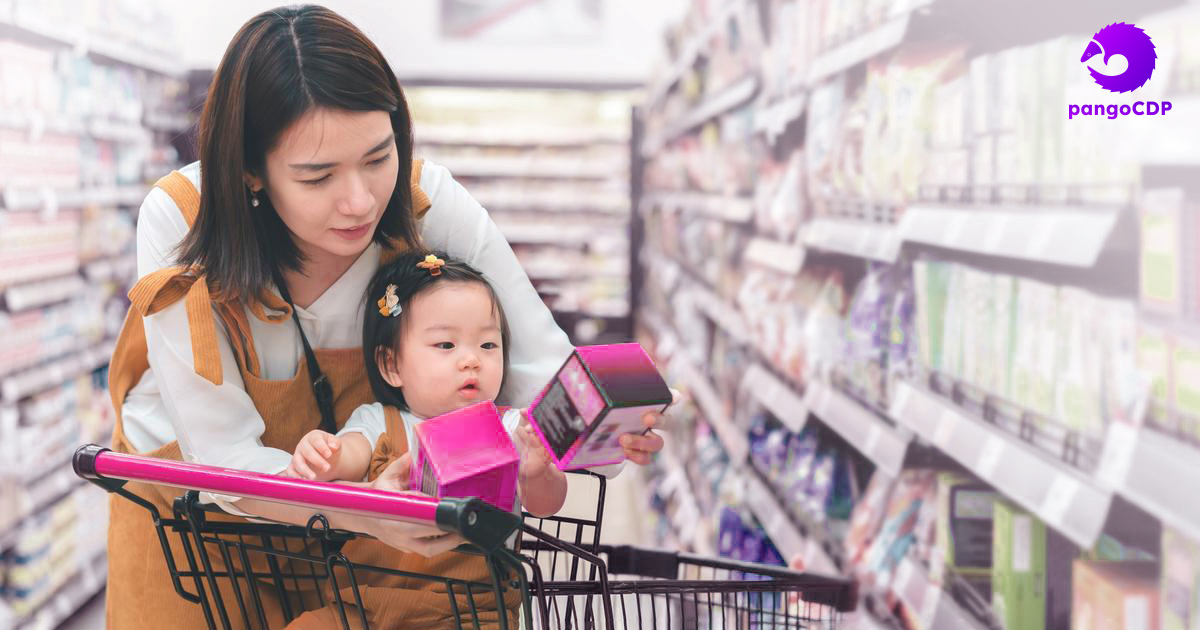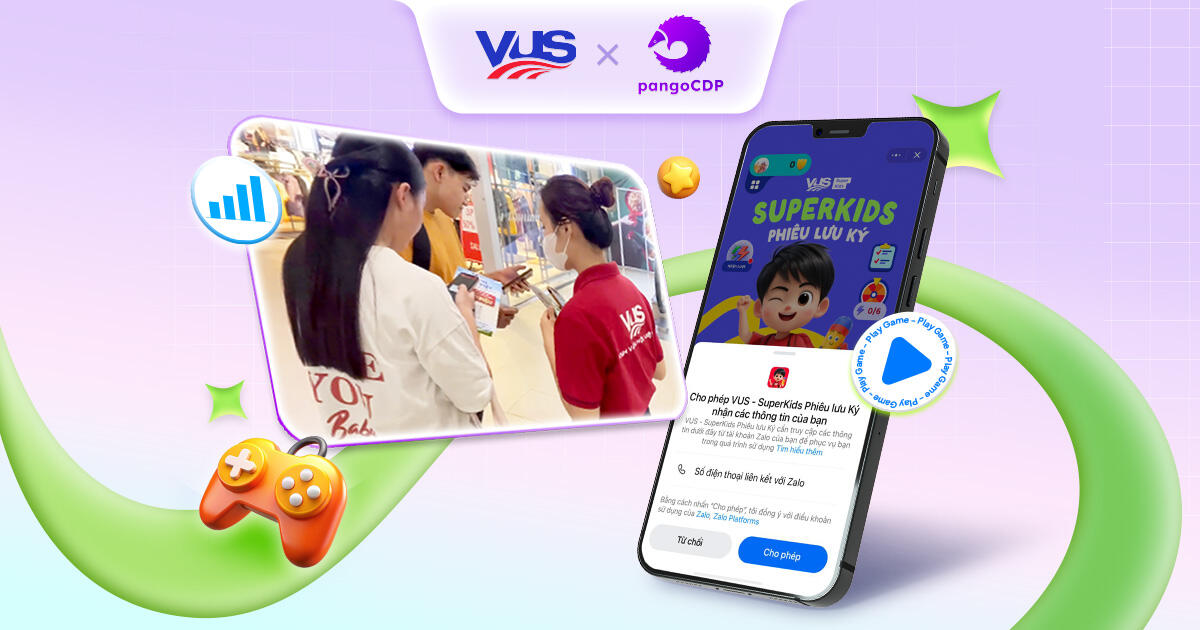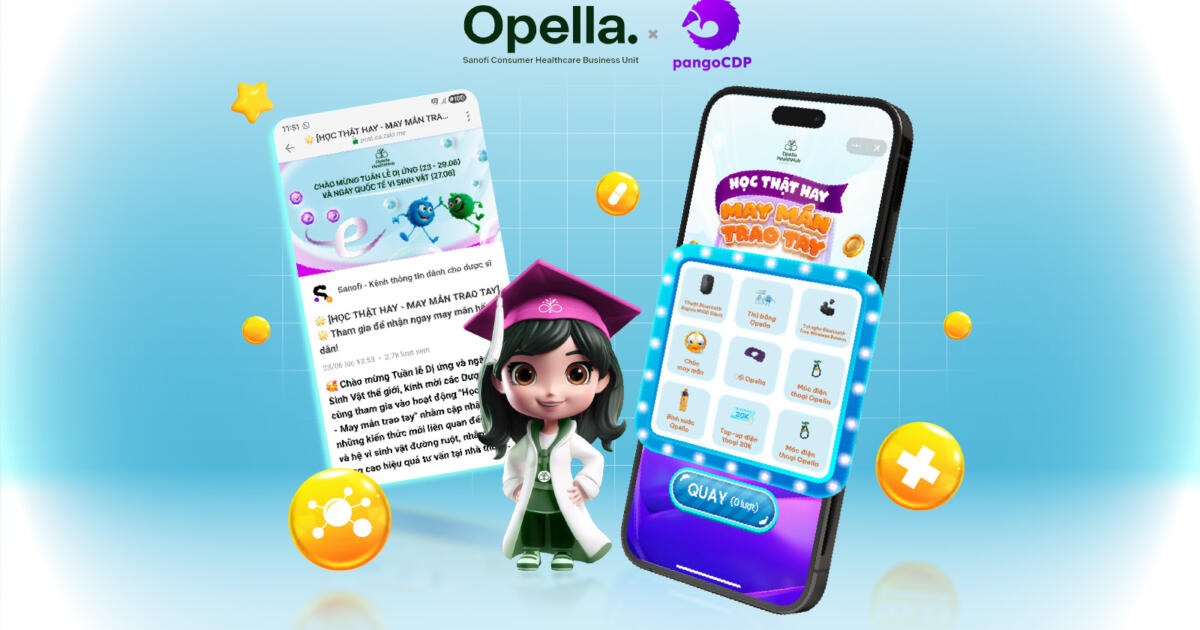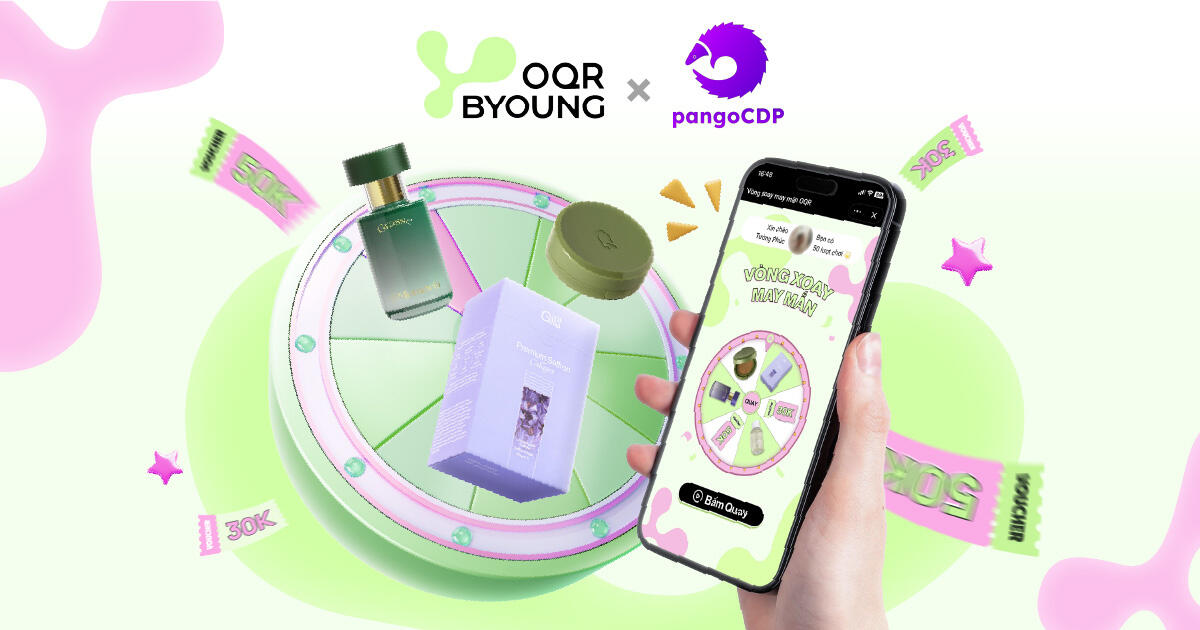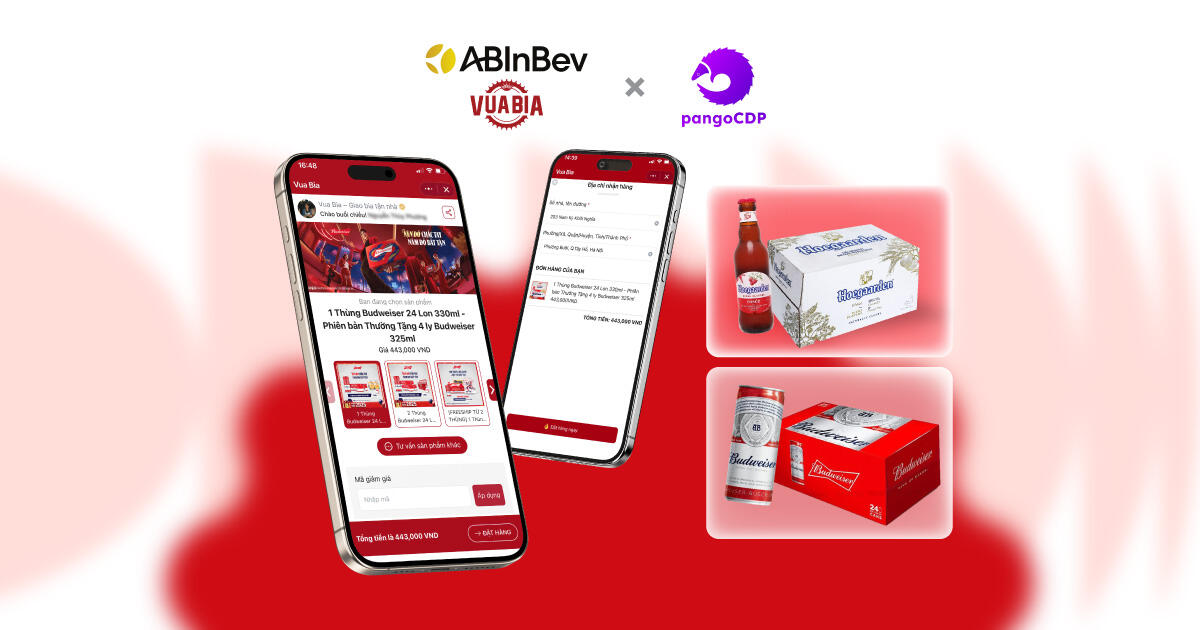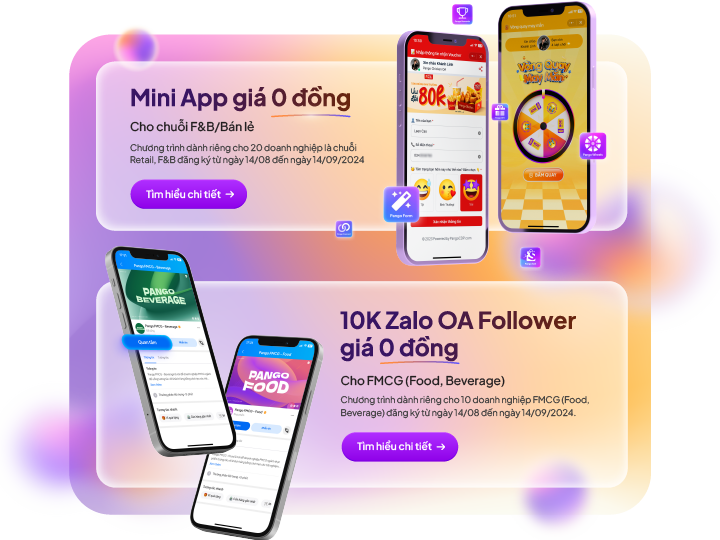Covid-19 has changed consumer behavior significantly. One of which is the habit of prioritizing the application of technology to daily shopping needs. FMCG’s distribution channels such as supermarkets and retail chains have created an advantage from owning end-user data and have strategies that threaten the market share and profitability of manufacturers. Faced with fierce competitive pressure from the distribution channels, how can FMCG regain their power as in their prime?
The FMCG Distribution Model in Vietnam and Customer Data Insights
Over 20 years ago, global companies such as Unilever and Pepsi entered the Vietnamese market with new distribution methods. They began by setting up general agents and distributors in various regions, then organized point-of-sale systems to bring products to market.
The flexibility and variety of sales points, including many different forms such as grocery stores, eateries, bars, cafes and more, allowed manufacturers’ products to quickly cover all corners of streets, schools, markets and reach as many consumers as possible.

When supermarket chains exploded, the distribution of goods also partially shifted through these points of sale. After that, we witnessed the outstanding development of e-commerce platforms, opening up potential distribution channels for manufacturers.
Despite the variety of distribution channels, the biggest weakness for manufacturers in the distribution chain is the lack of direct access to end consumers. All desired data must come through the final retail points. However, discussing customer data with traditional retail points like small grocery stores or eateries is impractical. For retail systems, sharing data is often just a “one-sided wish” of manufacturers.

Retail Chains Enter the Data Race – Are FMCG businesses at a Disadvantage?
Modern retail chains are increasingly giving a great advantage over traditional distribution models thanks to the control of customer data. They aim to acquire customer information through the benefits of membership cards, accumulated points and build regular interactions with customers.
With a significant market presence and their own customer base, retail chains have a higher position in relations with manufacturers and begin to have “claims” that directly impact manufacturers’ benefits, such as discounts, price pressures, and promotional requirements.
Additionally, many products have been produced by retail chains themselves. The most obvious is that when walking through the shelves of any major retail chain, customers will see branded products of the retail chain appear more often. Not only are these products favored in store placement, but the chain also actively promotes its own products to its existing customer data. This leads to direct competition with the manufacturers’ products of the same type.
Thus, whether they like it or not, manufacturers must adapt to balance their relationship with retailers, which includes owning customer data.
“Reaching” End Customers – It’s Time for FMCG to “Transform”
Apart from creating distribution channels, FMCG companies are also investing in marketing campaigns aimed at end customers to create a “top of mind” effect.
Traditional product promotion channels have evolved from one-way (radio, TV, press platform), to multi-dimensional channels like social media. The explosion of the internet in the past decade has opened up opportunities for customers to interact directly with manufacturers. This is an opportunity to get customer data, thereby building a direct interaction channel between the brand and the end customer with interesting interaction scenarios.
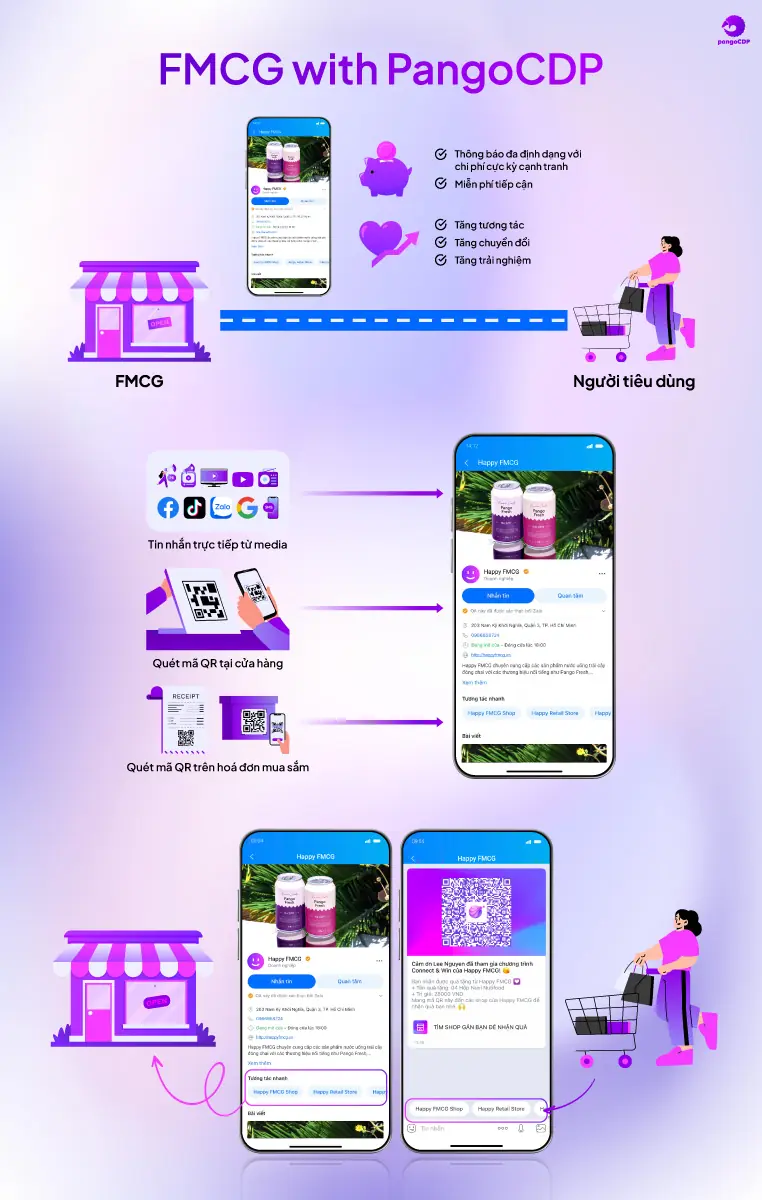
The Master Channel Supports Manufacturers in Reaching End Customers
1. Data Collection Support on The Master Channel
To build a highly effective interaction channel, businesses need to focus on data collection before developing interaction scenarios. Data must be collected from various sources, including websites, mobile applications, email marketing, online games and events. After that, businesses will direct customers to ”The Master Channel” in many different ways.
Nutifood is one of the major players in the dairy industry that has successfully navigated customers to their Master Channel (Nutifood chose Zalo as their Master Channel). By simply pressing the “Follow” Zalo OA, customers receive an invitation to participate in the program where they can invite five friends to follow Zalo OA and receive a welcome gift.
“With The Master Channel, the next interaction journey between customers and brands will not be interrupted halfway. This will be where businesses and customers will open a direct connection at a much more cost-effective rate compared to Telesales or Digital Ads,” shared by PhD. Dinh Mong Kha, who initiated the concept of The Master Channel and the PangoCDP team.
2. 1:1 Interaction with End Customers
Businesses need to be aware of the story that a customer who pays 3 million/month needs to have a different interaction scenario with a customer paying 500,000 VND/month. What story do we tell, how do we address the specific needs of each customer group? That’s why personalized messages comes into play
PangoCDP customer data platform will support marketers to segment customers into groups according to different buying journeys. Each group will be interested in a separate type of product. Then, through The Master Channel, businesses can send customized messages to trigger customers’ shopping needs.
3. Keeping the Interaction Channel Warm with Various Experiences through The Master Channel
Businesses can completely create sales opportunities through interactive activities that keep the interaction channel warm.


To start simply, brands can offer product samples to customers who follow OA after completing a survey. For customer enjoyment and engagement, businesses can consider entertaining games that are suitable and associated with the brand. For longer-lasting experiences, businesses can deploy point-based purchasing campaigns right on The Master Channel, so that customers can interact with brands over an extended period.
With PangoCDP’s support, the data story is no longer a difficult problem for FMCG enterprises. Instead of managing point-of-sale data only, it’s time for businesses to implement a specific strategy to get end-user data and apply The Master Channel for an epic “transformation” in the process of interacting with customers.
If you are interested in The Master Channel and PangoCDP for breakthrough revenue results, contact us at: https://pangocdp.com/vi/lien-he/
